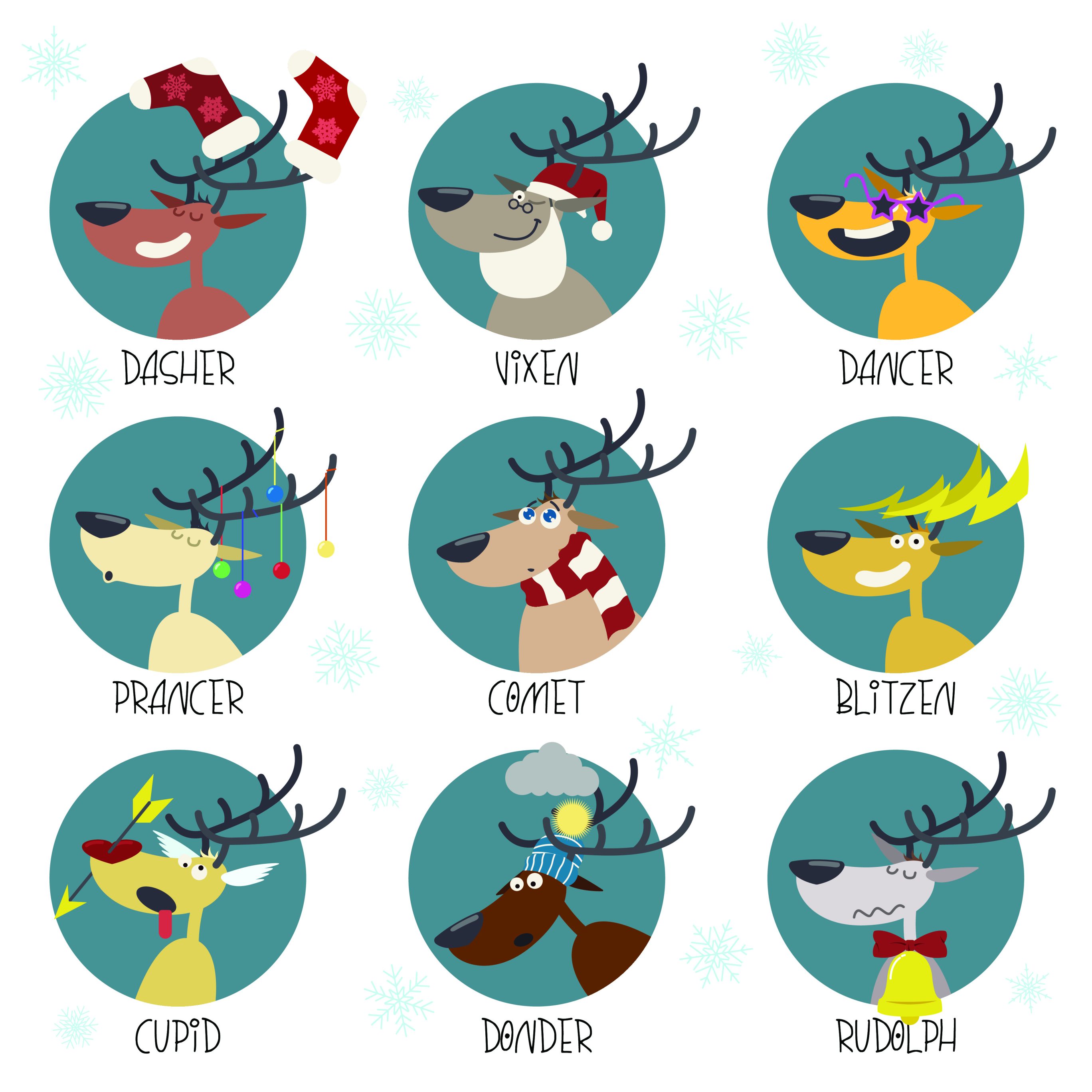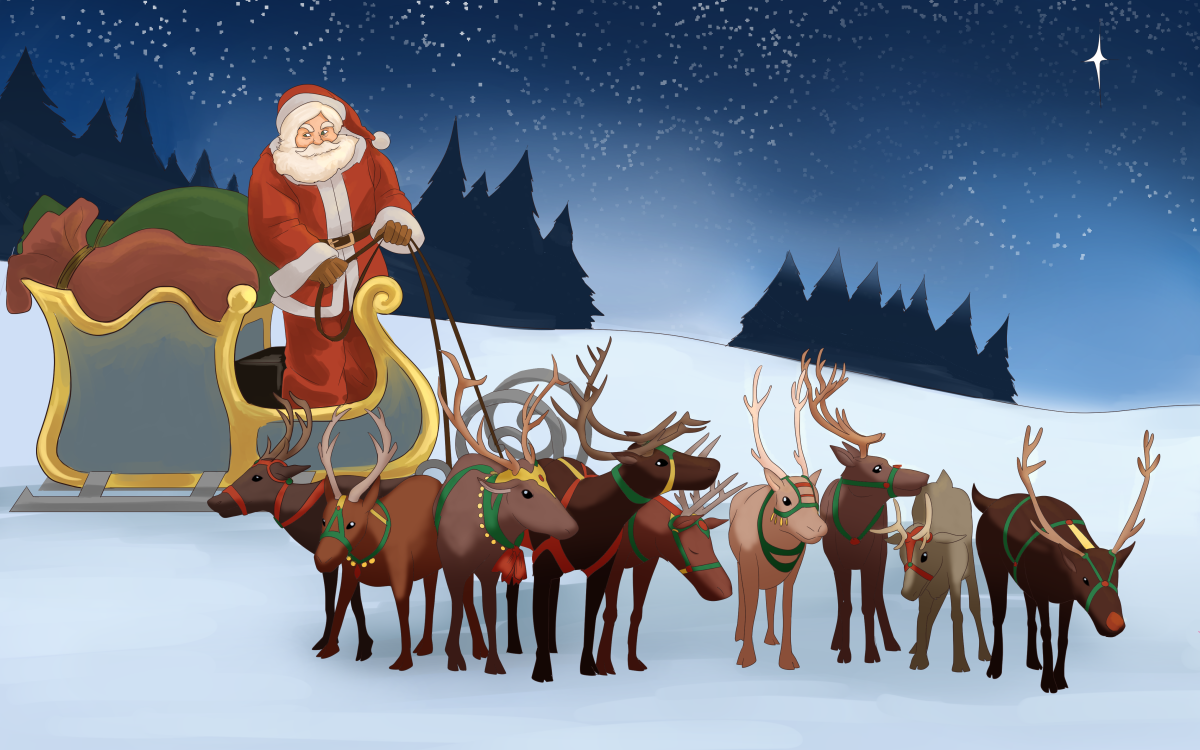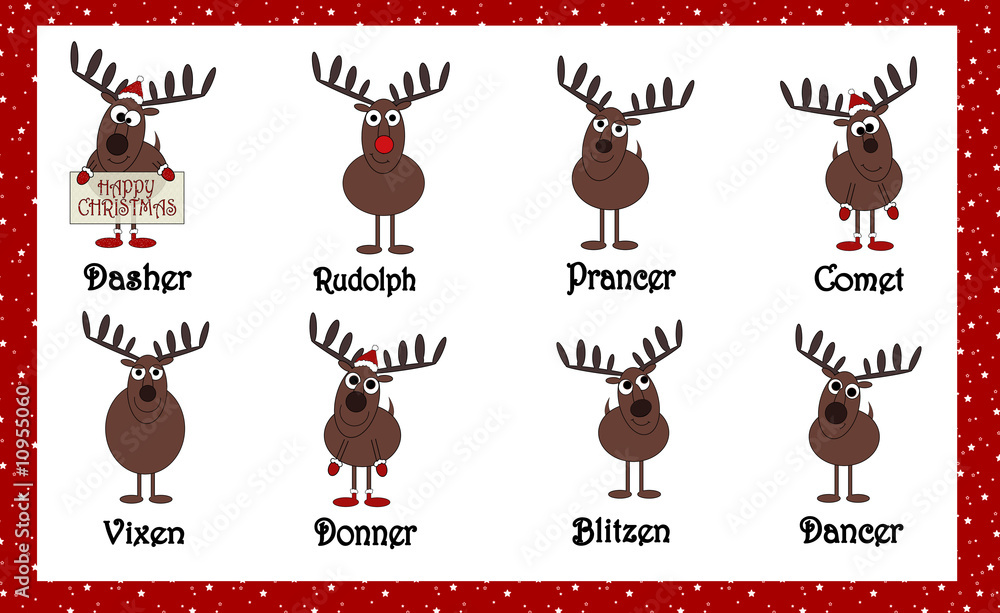Santa Claus names of reindeers have fascinated people for generations. From childhood stories to holiday traditions, these magical creatures play a pivotal role in spreading holiday cheer. Whether you're a parent explaining the magic of Christmas to your children or simply curious about the origins of these iconic names, this guide will take you on a journey through the world of Santa's reindeers.
The story of Santa Claus and his reindeers has become an integral part of Christmas celebrations worldwide. These mythical animals are not just companions to Santa; they symbolize the spirit of giving, wonder, and joy. In this article, we'll explore the origins, significance, and fun facts surrounding the names of Santa's reindeers, ensuring you're well-equipped to dive deeper into this fascinating topic.
As we delve into the details, you'll discover how these names have evolved over time and their cultural significance. Whether you're looking for a fun trivia fact or a deeper understanding of Christmas lore, this article has everything you need to know about Santa Claus's reindeers.
Read also:Im Nothing Like Yall Exploring The Meaning Relevance And Impact
Table of Contents
- Origins of Santa Claus and His Reindeers
- Names of Santa's Reindeers
- Biography of Santa Claus
- Historical Evolution of Reindeer Names
- Roles of Reindeers in Christmas Traditions
- Fun Facts About Santa's Reindeers
- Reindeers in Popular Culture
- Cultural Impact of Santa's Reindeers
- Myths and Legends Surrounding Santa's Reindeers
- Conclusion
Origins of Santa Claus and His Reindeers
The legend of Santa Claus dates back centuries, with roots in the story of Saint Nicholas, a historical figure known for his generosity. Over time, this tale evolved into the modern-day depiction of Santa Claus, complete with his team of flying reindeers. The concept of reindeers pulling Santa's sleigh was popularized in the early 19th century through literature and poetry.
Early References to Reindeers
One of the earliest mentions of Santa's reindeers can be traced back to the poem "A Visit from St. Nicholas," commonly known as "The Night Before Christmas." Written by Clement Clarke Moore in 1823, this poem introduced the world to the names of Santa's reindeers, cementing their place in holiday traditions.
The poem describes Santa's reindeers as nimble creatures capable of flying through the night, delivering presents to children around the world. This imagery has remained a staple in Christmas celebrations ever since.
Names of Santa's Reindeers
Santa Claus's reindeers have distinct names that have become synonymous with the holiday season. Each name carries a unique meaning and adds to the charm of the story. Below is a list of the reindeers' names:
- Dasher
- Dancer
- Prancer
- Vixen
- Comet
- Cupid
- Donner
- Blitzen
- Rudolph (popularized later)
Significance of the Names
Each name reflects the personality and characteristics of the reindeer. For instance, "Dasher" symbolizes speed, while "Cupid" represents love and affection. These names were carefully chosen to enhance the magical aura surrounding Santa's journey.
Read also:Exploring The Fascinating World Of Esports A Comprehensive Guide
Biography of Santa Claus
Santa Claus, also known as Saint Nicholas, is a legendary figure who embodies the spirit of generosity and kindness. Below is a brief overview of his life and legacy:
| Attribute | Details |
|---|---|
| Name | Santa Claus (originally Saint Nicholas) |
| Birthplace | Myra, Asia Minor (modern-day Turkey) |
| Occupation | Bishop and Philanthropist |
| Legacy | Known for his generosity and gift-giving traditions |
Historical Evolution of Reindeer Names
The names of Santa's reindeers have undergone several changes over the years. Initially, the poem "The Night Before Christmas" introduced eight reindeers, but it wasn't until the 1939 story "Rudolph the Red-Nosed Reindeer" that a ninth reindeer joined the team. Rudolph's introduction added a new dimension to the story, emphasizing themes of acceptance and inclusion.
Impact of Rudolph's Addition
Rudolph's unique characteristic—his glowing red nose—became a symbol of individuality and self-worth. This addition not only expanded the reindeer roster but also enriched the narrative with valuable life lessons.
Roles of Reindeers in Christmas Traditions
Santa's reindeers play a crucial role in the holiday season. Beyond their magical ability to fly, they represent the essence of teamwork and cooperation. Each reindeer contributes to the success of Santa's mission, ensuring that every child receives their gifts on time.
Modern Interpretations
In contemporary culture, reindeers are often depicted in various media, from animated films to children's books. These interpretations highlight the reindeers' personalities and adventures, making them relatable and endearing to audiences of all ages.
Fun Facts About Santa's Reindeers
Here are some interesting facts about Santa's reindeers:
- Rudolph's red nose is believed to glow due to bioluminescence, a natural phenomenon found in certain organisms.
- The names "Donner" and "Blitzen" are German for "thunder" and "lightning," respectively.
- Female reindeers, like Vixen, are capable of growing antlers, making them equally suited for sleigh-pulling duties.
Reindeers in Popular Culture
Santa's reindeers have inspired countless works of art, music, and literature. From the classic song "Rudolph the Red-Nosed Reindeer" to modern films like "The Polar Express," these magical creatures continue to captivate audiences worldwide.
Notable Appearances
Reindeers have appeared in numerous holiday specials and movies, often portrayed as adventurous and brave. These portrayals reinforce their status as beloved holiday icons.
Cultural Impact of Santa's Reindeers
Santa's reindeers have left an indelible mark on global culture. They represent the universal values of kindness, teamwork, and perseverance. Through their stories, they inspire people of all ages to embrace the spirit of giving and togetherness.
Symbolism in Different Cultures
In various cultures, reindeers are seen as symbols of resilience and adaptability. For instance, in Scandinavian folklore, reindeers are revered for their ability to survive harsh winters, making them a fitting companion for Santa's arctic adventures.
Myths and Legends Surrounding Santa's Reindeers
Throughout history, numerous myths and legends have surrounded Santa's reindeers. Some believe that the reindeers possess magical powers, while others attribute their abilities to Santa's enchantments. These stories add an element of mystery and wonder to the holiday season.
Scientific Explanations
While the concept of flying reindeers may seem fantastical, scientists have explored possible explanations, such as magnetic fields or advanced aerodynamics. These theories, though speculative, contribute to the ongoing fascination with Santa's reindeers.
Conclusion
In conclusion, the names of Santa's reindeers hold a special place in holiday traditions. From their origins in literature to their cultural significance, these magical creatures continue to inspire and delight people around the world. By understanding their history and symbolism, we gain a deeper appreciation for the magic of Christmas.
We invite you to share your thoughts and experiences in the comments below. Do you have a favorite reindeer or a memorable holiday story? Let us know! And don't forget to explore our other articles for more holiday insights and fun facts.
References:
- Moore, Clement Clarke. "A Visit from St. Nicholas." 1823.
- May, Robert L. "Rudolph the Red-Nosed Reindeer." 1939.
- "The Polar Express." Directed by Robert Zemeckis, 2004.


